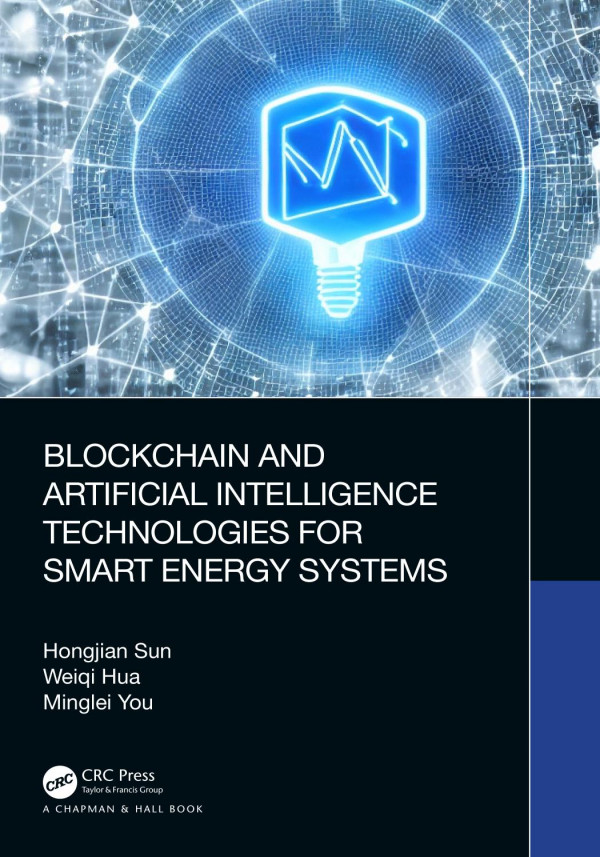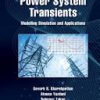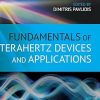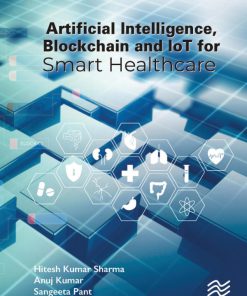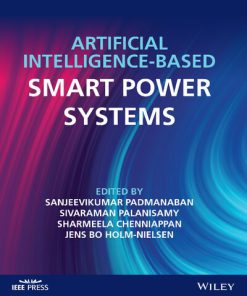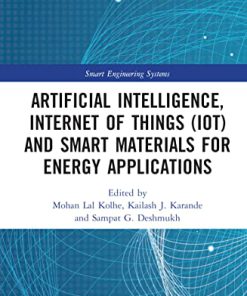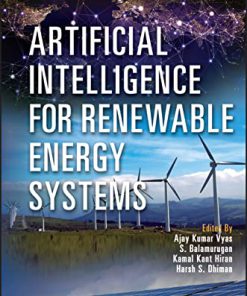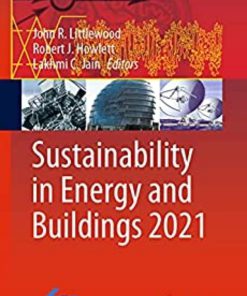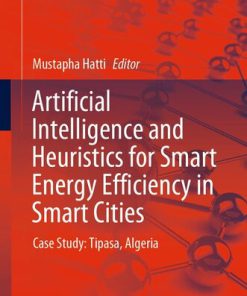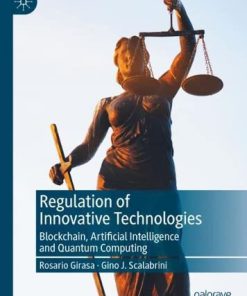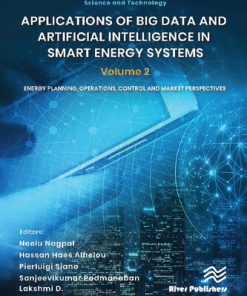Blockchain and Artificial Intelligence Technologies for Smart Energy Systems 1st Edition by Hongjian Sun 9780367771270 0367771276
$50.00 Original price was: $50.00.$25.00Current price is: $25.00.
Blockchain and Artificial Intelligence Technologies for Smart Energy Systems 1st Edition Hongjian Sun – Ebook Instant Download/Delivery ISBN(s): 9780367771270,0367771276
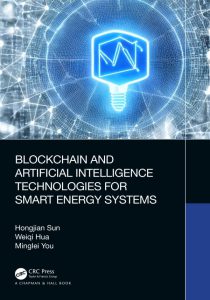
Product details:
- ISBN 10: 0367771276
- ISBN 13: 9780367771270
- Author: Hongjian Sun
Blockchain and Artificial Intelligence Technologies for Smart Energy Systems
Table contents:
Section I Fundamental Theories
Chapter 1 Smart Energy Systems
1.1 Introduction
1.2 Renewable Energy Sources
1.3 Energy Storage
1.4 Smart Metering
1.5 Demand-Side Management
1.6 Home Energy Management System
1.7 Chapter Summary
BIBLIOGRAPHY
Chapter 2 Theories of Artificial Intelligence
2.1 Introduction
2.2 Optimisation
2.3 Game Theory
2.4 Support Vector Machine
2.5 Dimensionality Reduction
2.5.1 Probabilistic Fundamental
2.5.2 Principal Component Analysis
2.5.3 Maximum Projection Variance
2.5.4 Minimum Cost of Reconstruction
2.6 Expectation Maximisation
2.6.1 Convergence of Expectation Maximisation Algorithm
2.6.2 Kullback–Leibler Divergence
2.6.3 Jensen Inequality
2.6.4 Generalised Expectation Maximisation
2.7 Gaussian Mixture Model
2.7.1 Model Introduction
2.7.2 Solution of Gaussian Mixture Model
2.7.2.1 E-Step
2.7.2.2 M-Step
2.8 Variational Inference
2.9 Hidden Markov Model
2.9.1 Evaluation
2.9.2 Learning
2.9.3 Decoding
2.10 Feedforward Neural Networks
2.10.1 Recurrent Neural Network
2.10.2 Long Short-Term Memory
2.10.3 Convolutional Neural Network
2.11 Reinforcement Learning
2.12 Chapter Summary
BIBLIOGRAPHY
Chapter 3 Theories of Blockchain Technologies
3.1 An Overview of Blockchain
3.2 Blockchain-Based Cryptocurrency
3.2.1 Cryptography Theory
3.2.1.1 Cryptographic Hash Function
3.2.1.2 Signature
3.2.2 Data Structure
3.2.2.1 Chaining Features
3.2.2.2 Merkle Tree
3.2.3 Consensus
3.2.3.1 Unspent Transaction Output
3.2.3.2 Proof-of-Work
3.2.4 Block Structure
3.2.5 Difficulty
3.2.5.1 Reasons for Adjusting Difficulty
3.2.5.2 Mechanism for Adjusting Difficulty
3.2.6 Node Types
3.2.7 Networks
3.3 Blockchain-Based Smart Contracts
3.3.1 Account
3.3.2 Data Structure
3.3.2.1 State Tree
3.3.2.2 Transaction Tree
3.3.2.3 Receipt Tree
3.3.3 Smart Contracts
3.3.3.1 Input and Output
3.3.3.2 Control Structures
3.3.3.3 Creating New Contracts
3.3.3.4 Conditions and Errors
3.3.3.5 Deployment of Smart Contracts
3.4 Chapter Summary
BIBLIOGRAPHY
Section II Applications in Smart Energy Systems
Chapter 4 Reforms in Energy Systems: Prosumers Era and Future Low-Carbon Energy Systems
4.1 Key Stakeholders in GB Energy System
4.1.1 Power System Operator
4.1.2 Transmission System Operator
4.1.3 Distribution Network Operator
4.1.4 Energy Suppliers
4.1.5 Policy Maker
4.1.6 Regulators
4.1.7 Consumers
4.2 The Emerging Role of Prosumers
4.3 Market Structures for Prosumer Networks
4.3.1 Peer-to-Peer Trading Markets
4.3.2 Intermediary-Based Trading Markets
4.3.3 Microgrid-Based Trading Markets
4.4 Regulatory Supports
4.4.1 Regulatory Barriers and Principles for Prosumers Engagement
4.4.2 Policy Supports for Net Zero Transition
4.4.2.1 Carbon Pricing Scheme
4.4.2.2 Contract for Difference Auction
4.4.2.3 Capacity Auction
4.4.3 Regulation for Electricity Trading and Balance: A Case in the GB Electricity Market
4.4.3.1 Settlement
4.4.3.2 Imbalance Management
4.5 Technical Challenges of Future Low-Inertia Power Systems
4.5.1 Frequency and Inertia
4.5.2 Challenges of Low-Inertia Power Systems
4.5.3 Solutions for Low-Inertia Power Systems
4.6 Chapter Summary
BIBLIOGRAPHY
Chapter 5 Application of Artificial Intelligence for Energy Systems
5.1 Introduction
5.2 Optimisation
5.3 Game Theory
5.4 Machine Learning
5.5 Stochastic Approaches
5.6 Agent-Based System
5.7 Research Example 1: Multi-Agent Model for Energy System Scheduling
5.7.1 Introduction
5.7.2 Framework of Multi-Agent System
5.7.2.1 Agents Design
5.7.2.2 Agents Coordination
5.7.3 Problem Formulation
5.7.3.1 Demand-Side Management
5.7.3.2 Generation Scheduling
5.7.4 Case Studies
5.7.5 Research Summary
5.8 Research Example 2: Artificial Intelligence for Pricing Patterns Recognition
5.8.1 Introduction
5.8.2 Problem Formulation
5.8.2.1 Scenarios Analysis
5.8.2.2 Scheduling Strategy
5.8.3 Pricing Pattern Recognition
5.8.4 Case Studies
5.8.5 Research Summary
5.9 Example Research 3: Reinforcement Learning for Low-Carbon Energy Hub Scheduling
5.9.1 Introduction
5.9.2 System Model
5.9.2.1 Energy Hub Components
5.9.2.2 Technical Constraints
5.9.2.3 Carbon Emissions Tracing
5.9.3 Proposed Algorithm
5.9.3.1 Conditional Random Field for Elasticity Modelling
5.9.3.2 Reinforcement Learning
5.9.4 Numerical Results
5.9.4.1 Simulator
5.9.4.2 Evaluation of Model Performance
5.9.4.3 Evaluation of Cost and Carbon Reduction
5.9.5 Research Summary
5.10 Example Research 4: Artificial Intelligence for Energy Systems Scheduling under Uncertainties
5.10.1 Introduction
5.10.2 Data-Driven Approach in Addressing Uncertainties
5.10.2.1 Ideal Energy Dispatching
5.10.2.2 Practical Energy Dispatching
5.10.2.3 A Brief Revisit on DNN
5.10.2.4 Optimal Dispatching Model via DNN
5.10.2.5 Day-Ahead Scheduling Model via DNN
5.10.2.6 Addressing Multiple Uncertainties via Deep Learning
5.10.3 Multi-Vector Energy System Implementations
5.10.3.1 A Case Study of Settlement Performance
5.10.3.2 A Case Study of 2017 UK Dataset
5.10.3.3 A Case Study of 2018 UK Dataset
BIBLIOGRAPHY
Chapter 6 Implementation of Blockchain in Local Energy Markets
6.1 Introduction
6.2 Blockchain Enabling Decentralised Energy Markets
6.2.1 Peer-to-Peer Energy Trading
6.2.2 Potential Applications of Blockchain Technologies
6.2.3 Comparison Remark
6.3 Example Research 1: Peer-to-Peer Trading Integrating Energy and Carbon Markets
6.3.1 Introduction
6.3.2 Trading Framework
6.3.2.1 Prosumer-Centric Trading
6.3.2.2 Microgrid-Trader-Centric Trading
6.3.2.3 Peer-to-Peer Trading Platform
6.3.3 Problem Formulation
6.3.3.1 Carbon Emissions Flow
6.3.3.2 Prosumer-Centric Algorithm
6.3.3.3 Microgrid-Trader-Centric Algorithm
6.3.3.4 Smart Contract-Based Auction Mechanism
6.3.4 Case Studies
6.3.4.1 Simulation Setup and Data Availability
6.3.4.2 Balancing Performances of Energy and Carbon Allowance
6.3.4.3 Demonstration of Interface between Scheduling Algorithms and Smart Contract
6.3.4.4 Demonstration of Smart Contract Execution
6.3.5 Research Summary
6.4 Example Research 2: Blockchain-Secured Peer-to-Peer Energy Trading
6.4.1 Introduction
6.4.2 System Model
6.4.2.1 Peer-to-Peer Trading Framework
6.4.2.2 Transaction Standard
6.4.2.3 Address Generation
6.4.3 Energy and Carbon Markets Coupling Theory
6.4.4 Case Studies
6.4.5 Evaluation of Decentralised Trading Scheme
6.4.5.1 Peer-to-Peer Trading
6.4.6 Research Summary
BIBLIOGRAPHY
Chapter 7 Cyber Physical System Modelling for Energy Internet
7.1 Review of Cyber Physical System Modelling Methods
7.1.1 ICT-Based CPS Modelling
7.1.1.1 ICT for CPS
7.1.1.2 Cyber Security for CPS
7.1.2 Energy System-Based CPS Modelling
7.1.3 Hybrid CPS Modelling
7.2 Multi-Vector Energy System
7.2.1 Coordination for Multi-Vector Energy System
7.2.1.1 Multi-Vector Energy System Modelling
7.2.1.2 MVES Coordination Modelling
7.2.2 Artificial Intelligence Enhancing Multi-Vector Energy System
7.2.2.1 Addressing Physical Constraints in Artificial Intelligence Algorithms
7.2.2.2 Deep Learning Enhanced Multi-Vector Energy System
7.2.3 Remarks of Challenges
BIBLIOGRAPHY
Section III Testbeds for Smart Energy Systems
Chapter 8 Developing Testbeds for Smart Energy Systems
8.1 Review of Energy Systems Testbeds
8.1.1 Hardware-Based Designs
8.1.2 Software-Based Designs
8.1.3 Hybrid Designs
8.1.4 Remarks of Challenges
8.2 Testbed Design and Implementation for Energy Systems
8.2.1 ICT Implementation
8.2.1.1 Integration via Layered Architecture
8.2.1.2 Software-Defined Radio Implementations
8.2.1.3 Protocol Pool Method
8.2.2 Power System Implementation
8.2.2.1 Simulator-Based Implementation
8.2.2.2 Real-Time Simulations
8.2.3 Artificial Intelligence Integration
8.2.3.1 An Integration of Reinforcement Learning with the Testbed
8.2.3.2 Remarks on the Integration of Artificial Intelligence
8.2.4 Interfacing Techniques
8.2.4.1 Software-Based Interfacing Techniques
8.2.4.2 Hardware-Based Interfacing Techniques
8.2.5 Remarks of Challenges
People also search:
blockchain and artificial intelligence
difference between blockchain and artificial intelligence
advances in the convergence of blockchain and artificial intelligence
blockchain and artificial intelligence technology in e-health
blockchain and artificial intelligence the world rewired
You may also like…
Computers - Artificial Intelligence (AI)
Artificial Intelligence Blockchain and IoT for Smart Healthcare 1st Edition Hitesh Kumar Sharma
Computers - Artificial Intelligence (AI)
Artificial Intelligence-based Smart Power Systems 1st Edition Sanjeevikumar Padmanaban
Engineering - Energy & Power Resources
Computers - Artificial Intelligence (AI)
Arts - Architecture
Sustainability in Energy and Buildings 2021 Smart Innovation Systems and Technologies 263
Computers - Artificial Intelligence (AI)
Commercial & Financial Law

